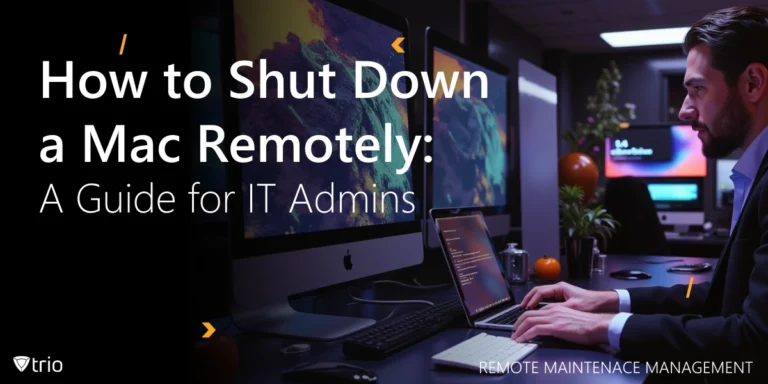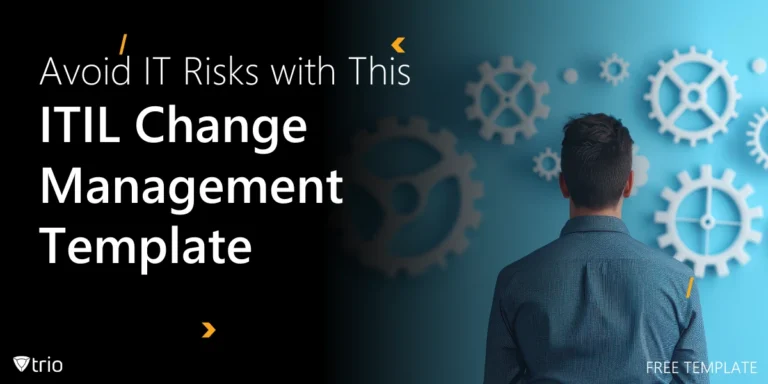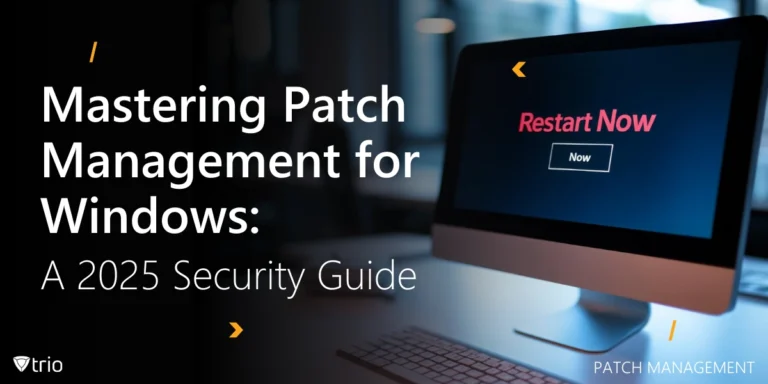The patient experience in hospitals is a critical aspect of healthcare delivery that goes beyond clinical outcomes. A positive patient experience can significantly impact patient satisfaction, health outcomes, and the reputation of the healthcare facility. Technology has changed how we view our capabilities and what we can do to enhance patients’ experiences in hospitals. According to Noreen Butte MD, Healthcare Executive, HIMSS Physician Committee Member, “The digital healthcare workflow revolution has significantly changed the way medicine is being practiced.” Ensuring a positive patient experience is not just about providing excellent medical care. It also involves using the capabilities at hand and discovering what they are capable of. Read on to learn more on the topic.
Key Elements of a Positive Patient Experience
Here are some key elements that together form a positive experience for patients.
Communication
Effective communication is at the heart of a positive patient experience. This includes clear and compassionate communication from healthcare providers, timely updates about treatment plans, and ensuring that patients understand their diagnosis and care instructions. Good communication helps to build trust between patients and healthcare providers.
Environment of Care
The physical environment of the hospital, including cleanliness, noise levels, and the comfort of waiting areas and patient rooms, plays a significant role in patient experience. A well-maintained, calming environment can reduce patient stress and anxiety, contributing to a more positive overall experience.
Compassionate Care
Compassionate care involves showing empathy, understanding, and respect for patients. This includes not only medical treatment but also the way healthcare providers interact with patients. Kindness, patience, and a willingness to listen can make a significant difference in how patients perceive their care.
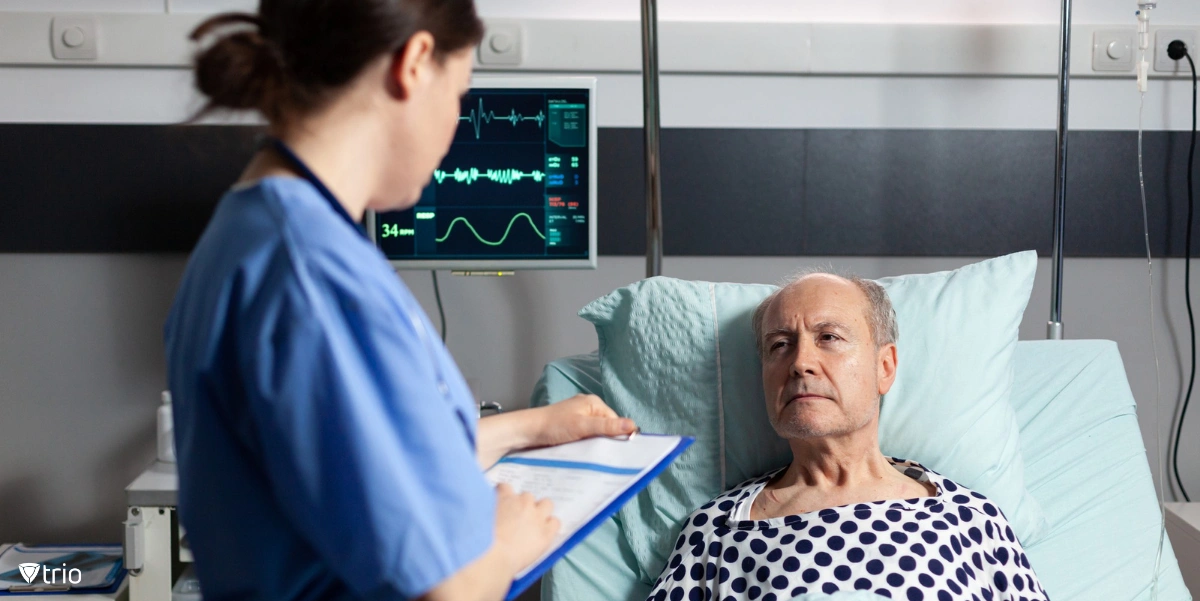
Role of MDMs in Enhancing Patient Experience
The integration of Mobile Device Management (MDM) solutions in hospitals is revolutionizing patient experience by leveraging technology to improve care delivery, communication, and overall efficiency. Medical device management enables healthcare providers to manage and secure a wide range of mobile devices used in patient care, from tablets and smartphones to specialized medical equipment. This technological enhancement not only streamlines operations but also directly impacts the quality of patient interactions and the speed of care delivery.
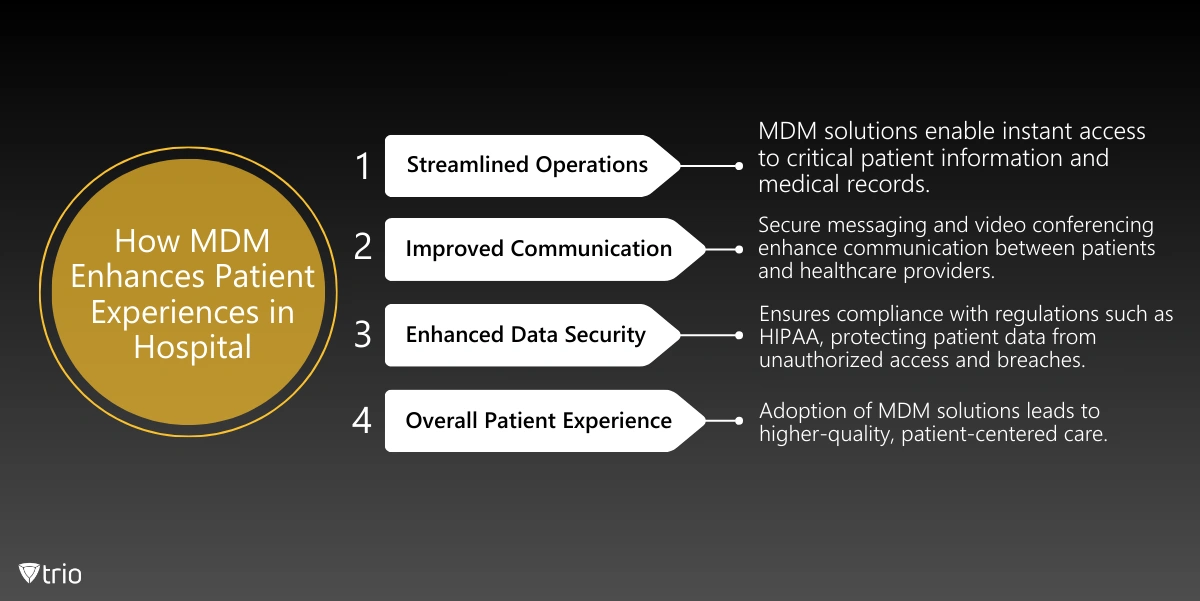
MDM solutions ensure that healthcare professionals have immediate access to critical patient information and medical records, no matter where they are in the hospital. This instant access facilitates better-informed decision-making and reduces the time spent on administrative tasks, allowing more time for direct patient care. For instance, doctors and nurses can use tablets to update patient records in real-time, reducing errors and ensuring that all team members have the most current information. This capability is particularly beneficial in emergency situations where timely access to accurate patient data can be lifesaving.
Moreover, MDM solutions enhance patient experience by improving the communication between patients and healthcare providers. Secure messaging and video conferencing capabilities enable doctors to consult with patients remotely, providing timely medical advice and reducing the need for physical visits. This is especially advantageous for patients with mobility issues or those in rural areas who may find it difficult to travel to the hospital. By facilitating remote consultations and follow-ups, MDM solutions help to make healthcare more accessible and convenient for patients, thereby improving their overall experience.
MDM also plays a crucial role in ensuring healthcare data security. With strict regulations like HIPAA in place, hospitals must safeguard patient information from unauthorized access and breaches. MDM solutions provide robust security features such as encryption, secure access controls, and remote wiping capabilities to protect sensitive data on mobile devices. This level of security not only complies with legal requirements but also builds trust with patients, who can be confident that their personal health information is being handled with the utmost care and confidentiality.
Conclusion
The patient experience in hospitals is a multifaceted aspect of healthcare that encompasses communication, the environment of care, and the quality of interactions between patients and healthcare providers. By focusing on improving these elements, hospitals can enhance patient satisfaction, improve health outcomes, and strengthen their reputation. Despite the challenges, investing in strategies to improve patient experience is crucial for delivering high-quality, patient-centered care. As healthcare continues to evolve, the emphasis on patient experience will only grow, making it a central component of successful healthcare delivery.
Transform your healthcare delivery with Trio’s MDM solution. Ensure secure, efficient, and seamless management of your mobile healthcare devices, enhancing patient care and experience. Try Trio’s free trial today!
Get Ahead of the Curve
Every organization today needs a solution to automate time-consuming tasks and strengthen security.
Without the right tools, manual processes drain resources and leave gaps in protection. Trio MDM is designed to solve this problem, automating key tasks, boosting security, and ensuring compliance with ease.
Don't let inefficiencies hold you back. Learn how Trio MDM can revolutionize your IT operations or request a free trial today!


